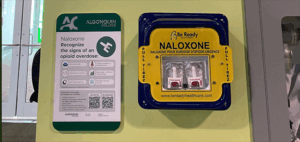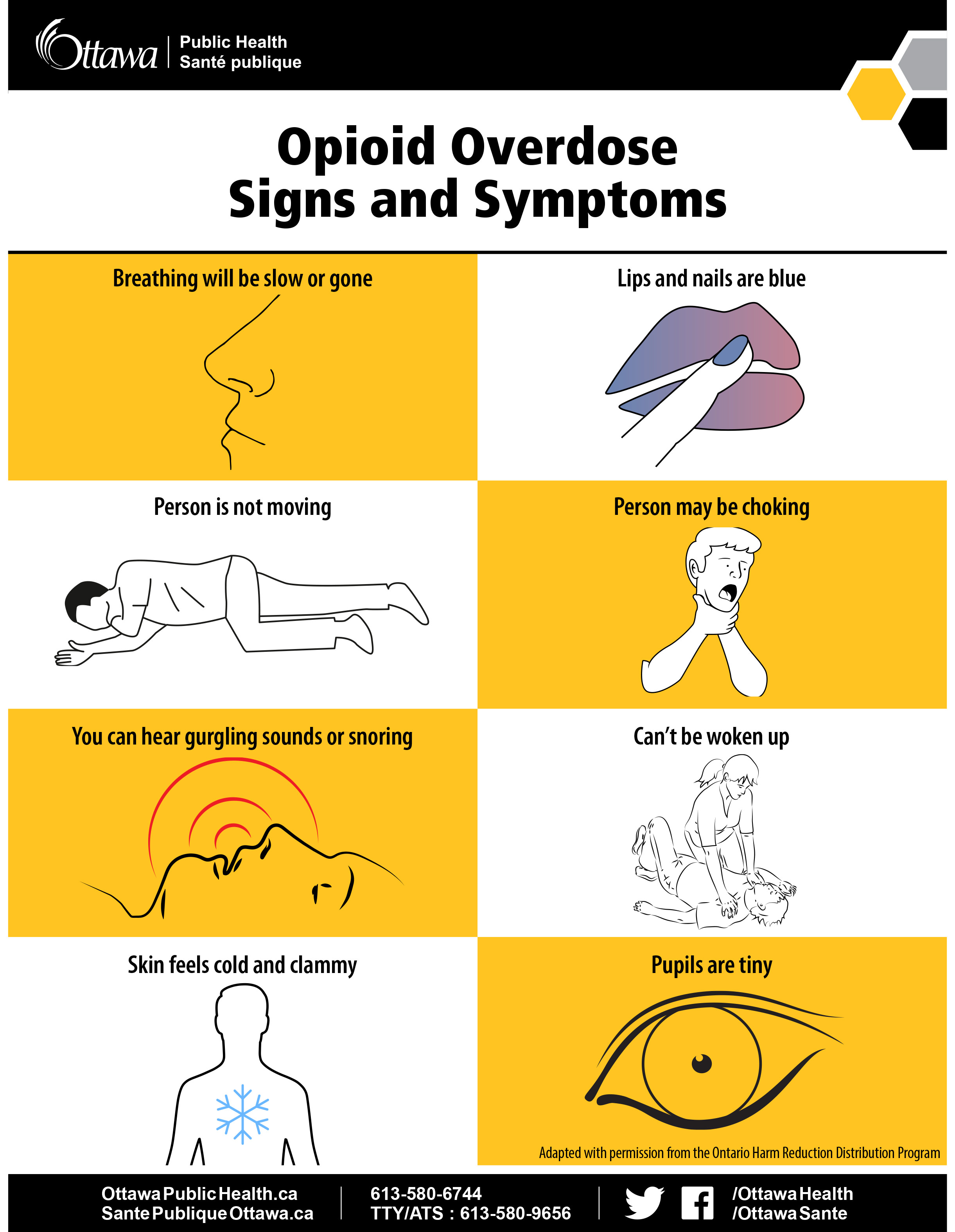Overdose Prevention
What You Need to Know About Fentanyl
Fentanyl
Across Canada, including Ottawa, there has been an increase in overdoses and overdose deaths related to opioids. Recently, it was discovered that a highly toxic and dangerous opioid drug known as fentanyl has turned up in our area. Locally, there have been examples of fentanyl being added to counterfeit prescription medications, and to other drugs such as cocaine, speed, and ecstasy/MDMA.
If you choose to use illicit drugs or counterfeit prescription medication, inform yourself of the risks and learn how to reduce your risk. This information could save your life, or the life of someone you know.
It’s important to know:
- Fentanyl is 50 to 100 times more toxic than the basic opioid, morphine.
It only takes an extremely small amount of the powder form to kill someone (as little as the equivalent of 2 grains of salt). - Fentanyl is in counterfeit pills that look identical to prescription opioids (OxyContin, Percocet).
- You can’t see, smell, or taste fentanyl.
- Carry Naloxone – it’s a medication that can reverse an overdose for a few minutes. Take-home Naloxone kits are free in Ontario from participating pharmacies.
Get more information on how to prevent an overdose, know the signs of an overdose, and put someone into a recovery position.
What You Need to Know About Naloxone
How to use Naloxone
What is Naloxone
Naloxone is a medication that can temporarily reverse the effects of an opioid overdose. Opioids include drugs like heroin, morphine, fentanyl, methadone, codeine, etc.
When to Use Naloxone
An overdose may look different from one person to the next and depending on the drugs involved. An overdose is a medical emergency and the first step is always to call 911.
Opioids (like heroin, morphine, fentanyl, methadone, oxycontin)
Signs and symptoms of an overdose:
- Breathing is very slow, or irregular, or they may not be breathing at all
- Fingernails and/or lips are blue
- Body is limp
- Deep snoring or gurgling sounds
- Loss of consciousness/passed out (can’t wake the person up)
- Unresponsive (not answering when you talk to them or shake them)
- Pinpoint (tiny) pupils
How to use Naloxone
Instructions regarding the use of Naloxone are also available from a variety of sources, including the link below.
Where to find Naloxone on campus
Resources available to you in Ottawa, Perth, and Pembroke:
- Ottawa Public Health has provided information about opioids, fentanyl, overdose prevention, and where to access Naloxone.
- Renfrew County & District Health Unit has provided information about opioids, fentanyl, overdose prevention, and where to access Naloxone.
- Perth District Health Unit has provided information about the substance use supports they offer.
- Algonquin College’s Umbrella Project provides on-campus harm reduction information and support to students struggling with substance use.
Naloxone Kits and Trainings on Campus:
Nasal spray Naloxone kits have been purchased for distribution throughout the Algonquin College campus in locations that are high volume hubs for services and large public venues. These locations include:
Ottawa Campus
 In partnership with Security Services, the Ottawa Campus maintains two Emergency Naloxone Boxes installed to support timely overdose response:
In partnership with Security Services, the Ottawa Campus maintains two Emergency Naloxone Boxes installed to support timely overdose response:
Where to find them:
- E building – First Floor
- ACCE building – First Floor
How it works: Each wall-mounted box features a yellow panel labeled “PULL.”
In an emergency:
- Pull the panel to access the kit (this triggers an alarm to alert others nearby)
- Inside the panel:
- Two doses of nasal naloxone
- Clear step-by-step instructions
Additional support: Campus Security also carries naloxone and should be contacted in the event of an emergency (Algonquin extension 5000).
Perth Campus
- Nurse’s Room
- Students’ Association
Pembroke Campus
- Library
- Office of the Dean
- Security Office
- Academic Office (Room 413)
- Academic Office (Room 314)
Click here here to get trained and have a kit mailed to your house!
Click here more information about preventing and responding to an overdose!
